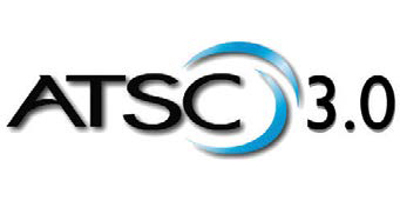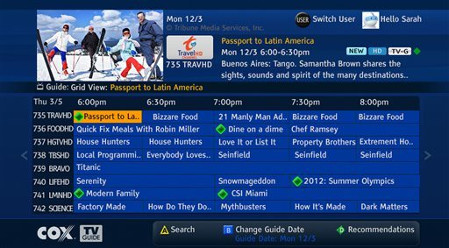ATSC 3.0 in a Multichannel Universe
In the final part of his series of articles on the ATSC 3.0 standard, Fred Baumgartner looks at how the next-gen broadcast standard will thrive in today’s multichannel world and discusses the role transmission vendors will play in the transition. SBE’s Ennes Workshop will provide a full day ATSC 3.0 tutorial on Saturday, April 16 in Las Vegas, just prior to the 2016 NAB Show.

PART III
LAS VEGAS—Two stakeholders that might not be so excited about ATSC 3.0 include the radio access network carriers—wireless data service providers—and multichannel video programming distributors. ATSC 3.0 essentially bypasses their networks, or more appropriately, limits the dream of having all of the broadcast TV signals carried on their own revenue-producing networks. MVPDs offer “triple play” and “quad-triple play” bundles in order to earn all of your TV, data, phone, and wireless business, with some buying spectrum and others making agreements with carriers to provide all of your wireless needs at home and away.
Some set-top boxes even incorporate Wi-Fi nodes to supply video to your at-home wireless devices. For the same reason that smartphones rarely have their internal receivers and apps for FM receivers activated and MediaFLO saw so few devices manufactured that were capable of receiving the MediaFLO TV programs, carriers have an incentive to retain their customers from bypassing their revenue producing data networks and directly receiving content for free over-the-air TV.
While carriers and some MVPDs benefit from selling connectivity, there may be other profits in ATSC 3.0. In the same sense that computers didn’t create a paperless world—but instead created demand to print even more—a more compelling TV offering with a high degree of interactivity might open more revenue opportunities for the carriers. The data traffic generated from advanced advertising and the convenience of cloud services in support of a more interactive TV experience will demand a lot of connectivity.
If you look at the owners of big media today, many, if not most, have invested in many of the pieces of media distribution that ATSC 3.0 addresses. Still, for the near future, carriers will almost certainly use OTA TV reception as a “pawn” in some ways. Some will use it as a “value add” to attract customers from carriers who prevent OTA reception; some will bargain over the emergency alerting functions with the government; while others will try to make deals with broadcasters for valuable mutual exclusivities. While it is important for broadcasters to have OTA TV built into smartphones, it is not necessary that it happen fast or completely. Handheld portable OTA TVs will likely and quickly be comparably less expensive than an AM transistor radio was in the 1960s or a first generation Walkman, Watchman, or iPod.
BROADCASTERS VS. MVPDs
Multichannel video program distributors have a regulated relationship with OTA television. There will almost certainly be some tweaking as domestic broadcasters deal with the channel repack after this year’s spectrum auctions, but probably only to preserve MVPD carriage for stations that lose their OTA transmitters. For the most part, MVPDs will carry the primary service from OTA broadcasters and restrict that distribution to the station’s normal coverage area; in the case of the major networks and other desirable programmers, stations negotiate a retransmission fee. The block of OTA programming, by some estimates, accounts for half of all TV viewing.
The retransmission fees paid to broadcasters—estimated at $6.3 billion in 2015, per SNL Kagan—is keeping broadcast alive in the manner to which it is accustomed (TVB estimates ad revenues at $45 billion to $50 billion per year and TV “digital” —the revenue from station’s Web advertising—at about $3 billion annually). The alternative agreement is “must carry” where the station receives nothing more than a channel on the system. Stations whose primary service would compete with the MVPD’s home shopping or other programming is of little interest to the bulk of an MVPD viewers.

Typically less than half of the OTA services are carried by MVPDs (e.g., only 18 of the 40 OTA services in Denver are carried on either cable or satellite); for the most part, only OTA viewers can access the “dot-2” or ancillary services. ATSC 3.0 changes this dynamic. Because ATSC 3.0 signals that go directly to the gateway router bypass the MVPD, the MVPD might bring little OTA value to the OTA-enabled viewer. Not all households will be able to receive all of the ATSC 3.0 signals with their gateway router, so there will be some value for the MVPD in providing the OTA signals to places where they otherwise would not be receivable, much like the master antenna systems of the past.
What happens here is both regulatory and statistical, but in any case, it will be largely market-driven. It’s possible that ATSC 3.0 will take a major bite out the MVPD business, but it’s also possible that MVPDs and broadcasters will come to a mutually acceptable arrangement where all of the features and functions of ATSC 3.0 meld with the features and functions that an MVPD—in particular, CATV with DOCSIS bidirectional IP capability—can provide.
The professional video industry's #1 source for news, trends and product and tech information. Sign up below.
A little-known fact is that while theft of MVPD services might be reasonably well contained, the theft of content is not. Over-the-top streaming services are expanding exponentially, and a pirated copy of just about anything on OTA, CATV, or movie theaters (even if it’s just a “cam feed”) is cheaply available from the growing numbers of “pirate” OTT aggregators who are rapidly devaluing MVPD’s content.
Inherently, any piece of content that can be turned into a viewable picture and listenable audio can be redistributed with quality approaching, if not identical to, the protected original. Equally unfortunate, the bar for entry for an OTT pirate provider is very low. Like swatting mosquitoes, there is no practical way to regulate an activity that is so widely practiced and so easy to do. Consider that you yourself might be entering the fringes of this arena when you install a Slingbox-like device for your kid at college to use. OTA’s business model, being commercially supported, has no such serious vulnerability. Broadcast’s model benefits from wider distribution, in particular if the eyeballs can be counted.
Of all the moving pieces, the relationship between MVPDs and OTA/ATSC 3.0 is the one that has both the most potential for mutually profitable cooperation and joint ventures, and the least regulatory clarity at this point.
THE UHDTV MARKET
ATSC 3.0 supports HEVC (high efficiency video codec), and/or other similar codecs, for Ultra-High Definition TV. Already, most high-end content producers, cameras, video processing, and production manufacturers are making and using UHDTV equipment. Interestingly, while new technology is always expensive, much of UHDTV is already state-of-the-art and not vaporware.

Even now, from monitors to cameras, the cost of UHDTV equipment is decreasing as quantity ramps up. It seems likely that UHDTV is the “new HDTV,” with a public that is buying bigger-screen UHDTVs. These viewers will in turn favor programming in UHDTV from wherever they can get it. ATSC 3.0 allows broadcasters to compete in this arena as they desire.
TRANSMISSION VENDORS
Broadcast equipment manufacturers will need to provide infrastructure and software products. ATSC 3.0 STLs (studio transmitter links), multiplexers, modulators and transmitters need to be manufactured and will be more complex and probably a bit more expensive. Instead of the program information descriptors in ATSC 1.0’s fixed 19.54 Mbps stream, ATSC 3.0 is based on flexible physical layer pipes all the way though the transmission stream.
Prototype ATSC 3.0 exciters are currently being field-tested, and based on current information, it looks like an ATSC 3.0 transmitter will need to handle a dB or two of peak-to-average power that ATSC 1.0 doesn’t require. Hence, transmitters will be bigger for the same power.

GatesAir, LG and Zenith’s research and development lab have been testing their Futurecast ATSC 3.0 prototype system in Cleveland for the past year.
GatesAir has demonstrated this “Futurecast” in several test settings. TV manufacturers in Korea, which has also adopted ATSC, are working with its Electronics and Telecommunications Research Institute to set up demonstrations and tests. Certainly, various vendors at this year’s NAB Show will be demonstrating pieces of ATSC 3.0 hardware and software.
There are roughly half the number of domestic transmitter manufacturers than there were six years ago when the DTV transition was wrapping up. Each of the standing companies claims to be ready for ATSC 3.0. This stakeholder offers no opposition to ATSC 3.0 and it appears all wish to supply the market.
There are complications however. Single frequency networks demand much heavier monitoring and control systems, as well as a higher level of management. MediaFLO discovered that it was even advantageous to have remote receiver locations in the market to accurately track the performance of the distribution network. SFNs that fall out of timing—resulting from something as simple as loss of GPS of a few minutes or hours—can become “interferers” rather than “boosters.” The monitoring and control system necessary for this kind of distribution is a lot more complex than that of a single transmitter on a mountain. It can also be done rather well if a system can reconfigure itself to deal with the loss of one of the boosters or even the main.
IN CONCLUSION
The ATSC 3.0 transition is very different from the DTV transition in that it links the Internet with broadcast in a way that changes where and how one can watch TV and how profitable it can be. By historical standards, the conversion to ATSC 3.0 is considerably less challenging than the digital transition was and the rewards are much greater. The support for ATSC 3.0 comes not from ATSC 3.0 being a better broadcasting standard, but because it has the potential to make broadcasting a better business. In other words, ATSC 3.0 falls into the category of disruptive technology and that’s why this year’s SBE/Ennes tutorials at NAB are so focused on what broadcast engineers most need to know this year.
Click here for more information on SBE’s Ennes workshops.
Mr. Baumgartner is TV Product Manager for Nautel and SBE Ennes Trustee.
Also see...
January 4, 2016
“Part I: April SBE Ennes Workshop to Focus on ATSC 3.0”
The relationship between broadcasting and technology is a deep one that defines us as broadcast engineers.
January 12, 2016
“Part II: ATSC 3.0 Brings Flexibility of IP to Broadcast”
The hardest part of the ATSC 3.0 proposed broadcast standard to get one’s head around is probably the IP transport piece.
